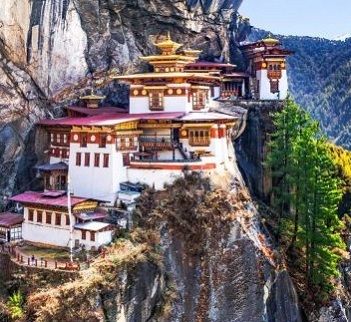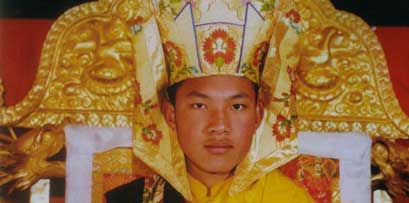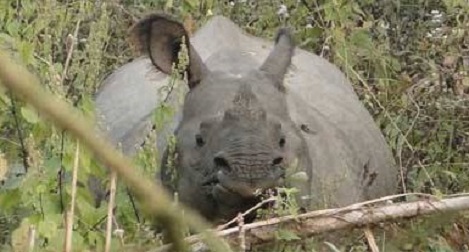Himalayan Tourism News

To give the shape of the city as lotus, in Shanga Zone eight Sanghas have been designed in the shape petal of lotus. The estimated cost of the proposed plan is US$ 762 million with the completion period of 15 years.
The objective of the plan is to honor the Outstanding Universal value of Lumbini, sustainable development of historic environment and cultural heritages and presentation of Metaphysical Foundation Templates for the use in urban design of the Lumbini Viswa Shanti nagar and creation of Lumbini as Buddhist teaching and learning city, world citizens living city, environmentally sustaining city and reflection and meditation city.
The plan addresses the problems of increasing population, industrialization and haphazard constructions in and around Lumbini. The area is fast industrializing and unplanned concrete structures are fast growing.
The first master plan was designed by world famous Japanese architect Kenzo Tange in 1978. It provided outline for preserving the ancient ruins and making the remote pilgrimage site accessible. However, its completion is still in limbo because of unstable politics, conflict among Buddhist sects and local grievances.
Dalai Lama's Reincarnation
Dalai Lama’s reincarnation has been hot issues recently as his highness wished to abandon the reincarnation. Karmapa, the third highest Tibetan Buddhism’s religious head said that it is up to Dalai Lama to decide whether he will be reborn. In the interview with Radio Free Aisa, he also added that the don’t talk much about the reincarnation of a living master in Tibetan tradition. Both Dalai Lama and Karma Pa are living in exile in India. Chinese officials have been emphasizing that Dalai Lama had no right to discard the reincarnation.
"However, now many questions are being generated. In my view, it is only the Dalai Lama himself who should decide about his future reincarnation. So I am confident and have full trust in his decision. There are many presumptive statements and guess works, but I am not worried," he said. Karmapa is the most renowned Lama to have fled Tibet after the Chinese occupancy in 1950s. Karmapa fled to India via Mustang of Nepal in 2000. Tibetan Buddhism holds that the soul of a senior lama is reincarnated in the body of a child on his death.

Nepal Tibet Bhutan Tour - 21 days
* Paro Thimphu & Punakha - Bhutan
* Kathmandu - Lhasa overland tour
* Everest North Base Camp
Karma Pa to be prosecuted

High court at Himachal Pradesh overturned a decision to drop charges and issued an order for authorities to open criminal proceedings against Karmapa Urgyen Trinley over the recovery of around $ 1 million in foreign currency during a raid on his Buddhist monastery in January 2011.
Stacks of bank notes of 26 different currencies were recovered from Karmapa’s monastery in Dharamshala. The monastery was raided after the tip off from two people who were pulled over by police in a car containing large amounts of cash. During interrogations, the pair said the money was meant for a land deal involving a trust headed by Trinley.
However, Karmapa has denied any misconduct and involvement in any land deals. He further said that the bank notes were donations from devotees gathered over the years. Trinley's spokesman, Kunzang Chungyalpa, said the lama had great faith in India's judicial system. "He strongly believes truth will prevail at the end."
Karmapa now 30 is the head of Karma Kagyu lineage of Tibetan Buddhism. He was recognized as 17th reincarnation of the Karmapa Lama both by China and the Dalai Lama. He fled Tibet at the age of 14 via Mustang region of Nepal and reached Indian after eight days journey on foot and horseback.
He is seen as having the highest profile of an array of young lamas who could succeed the 80-year-old Dalai Lama. Their appearances together have increased speculation he is being groomed as the Nobel peace laureate's spiritual successor.
Nature and wildlife
Tiger population up in Nepal

According to the report pulbished, Tiger population increased by 63% since 2009. 198 Tigers were counted in last census. The number increased from 212 in 2010. Of the 198 tigers, 120 are in Chitwan National Park, 50 in Bardiya National Park, 17 in Shukla Phanta Wildlife Reserve, seven in Parsa Wildlife Reserve and four in Banke National Park. The Bardiya National Park is one of the best wild reserves for the endangered big cats.
Nepal had signed ‘St Petersburg Declaration on Tiger Conservation’ with comitment to double the Tiger population by 2022. The global Tiger population has been reduced to 3,000 from 1,00,000 in last century. India has seen 30% increases in Tiger numbers since 2010.
The conservationists said that the initiative taken to make their participation and investment of revenue from tourism made it possible. Earlier, Tiger fear made some people even support poachers. In last few years, conservationists worked with people, built electronic fence, worked on increasing employment and revenue through tourism and gave bigger portion of the revenue to locals.
In another report, Experts from conservation group WWF has sighted China as herald in conservation of Tigers in Asia. Tiger parts are considered as status symbol and also used in traditional medicine in China.




